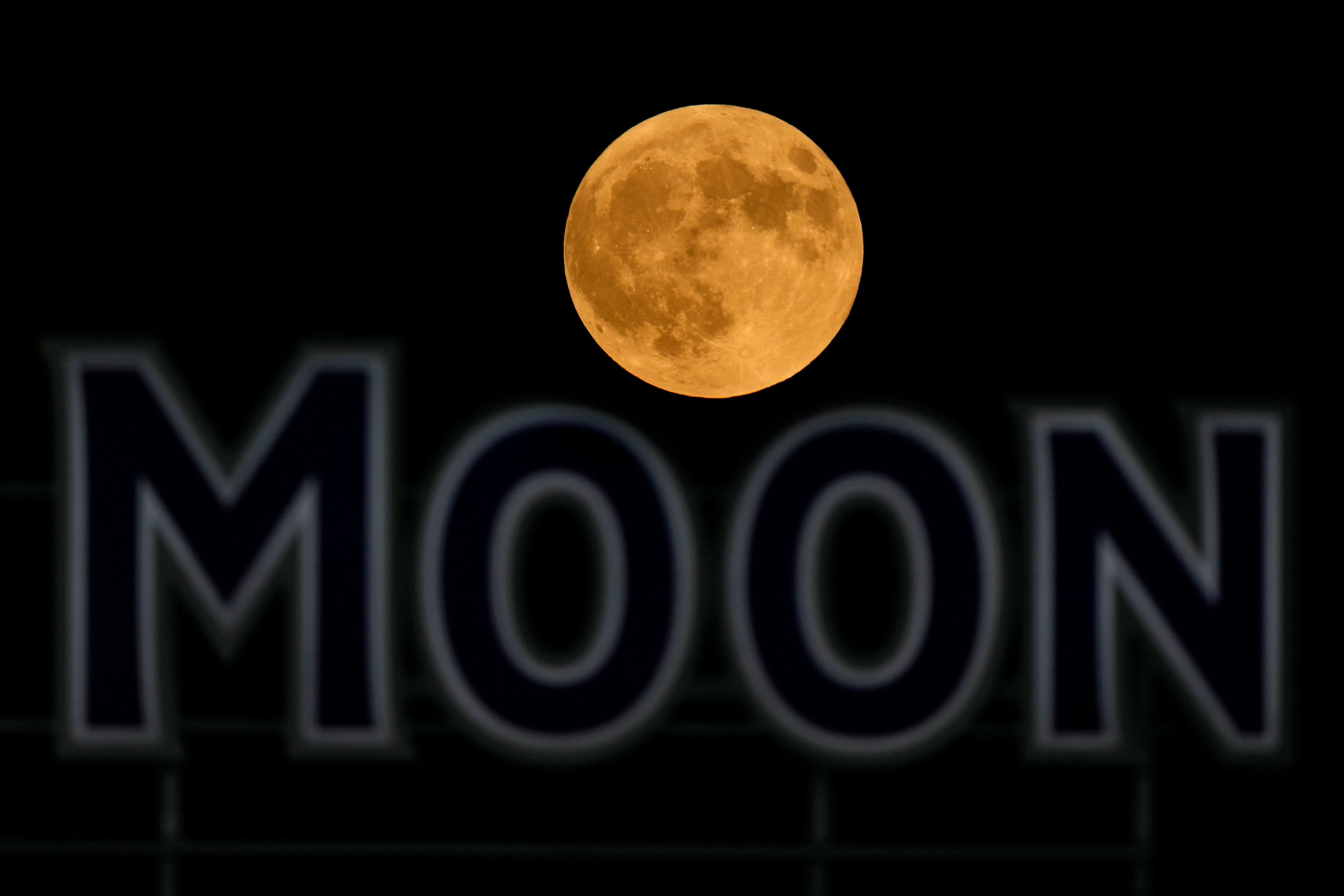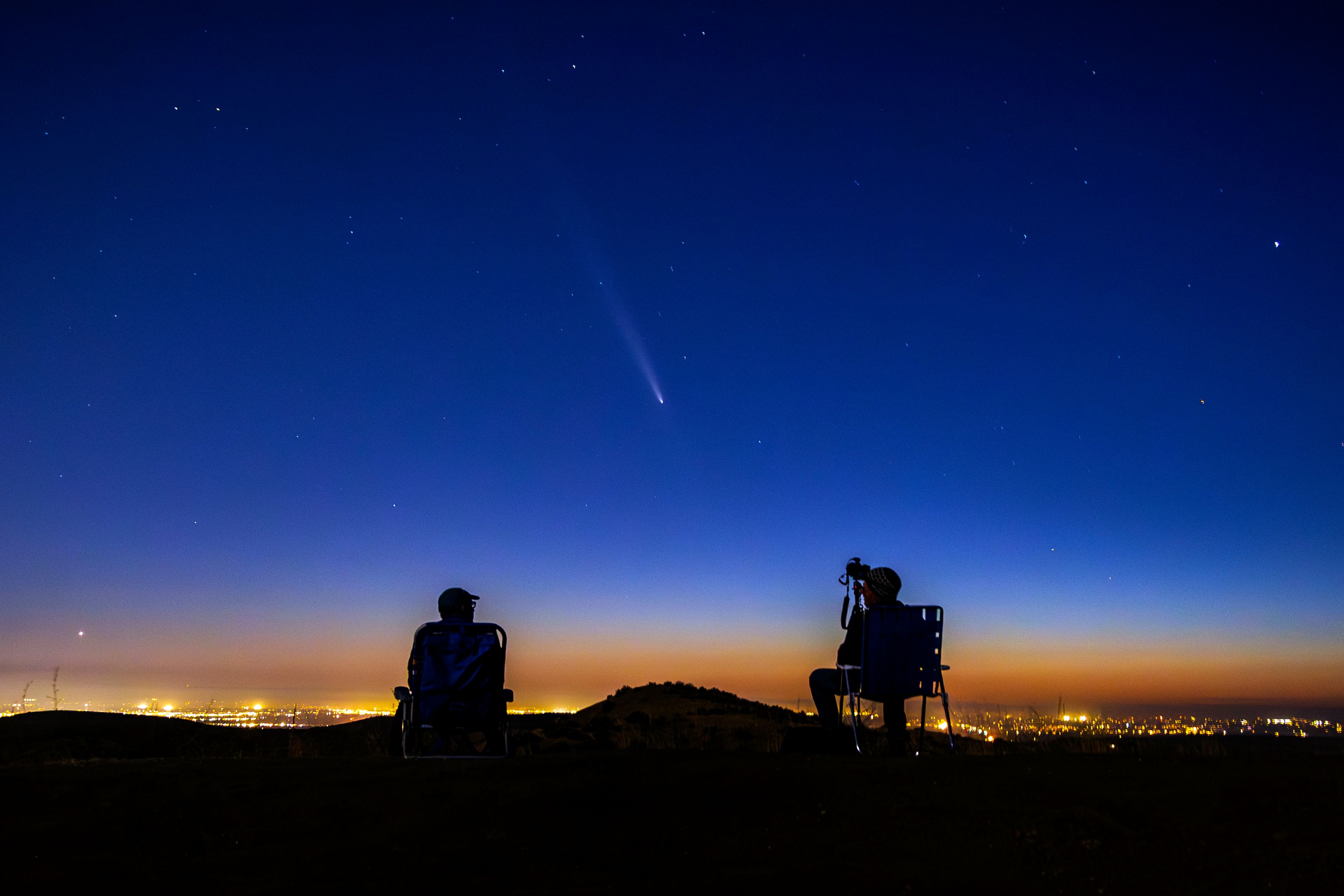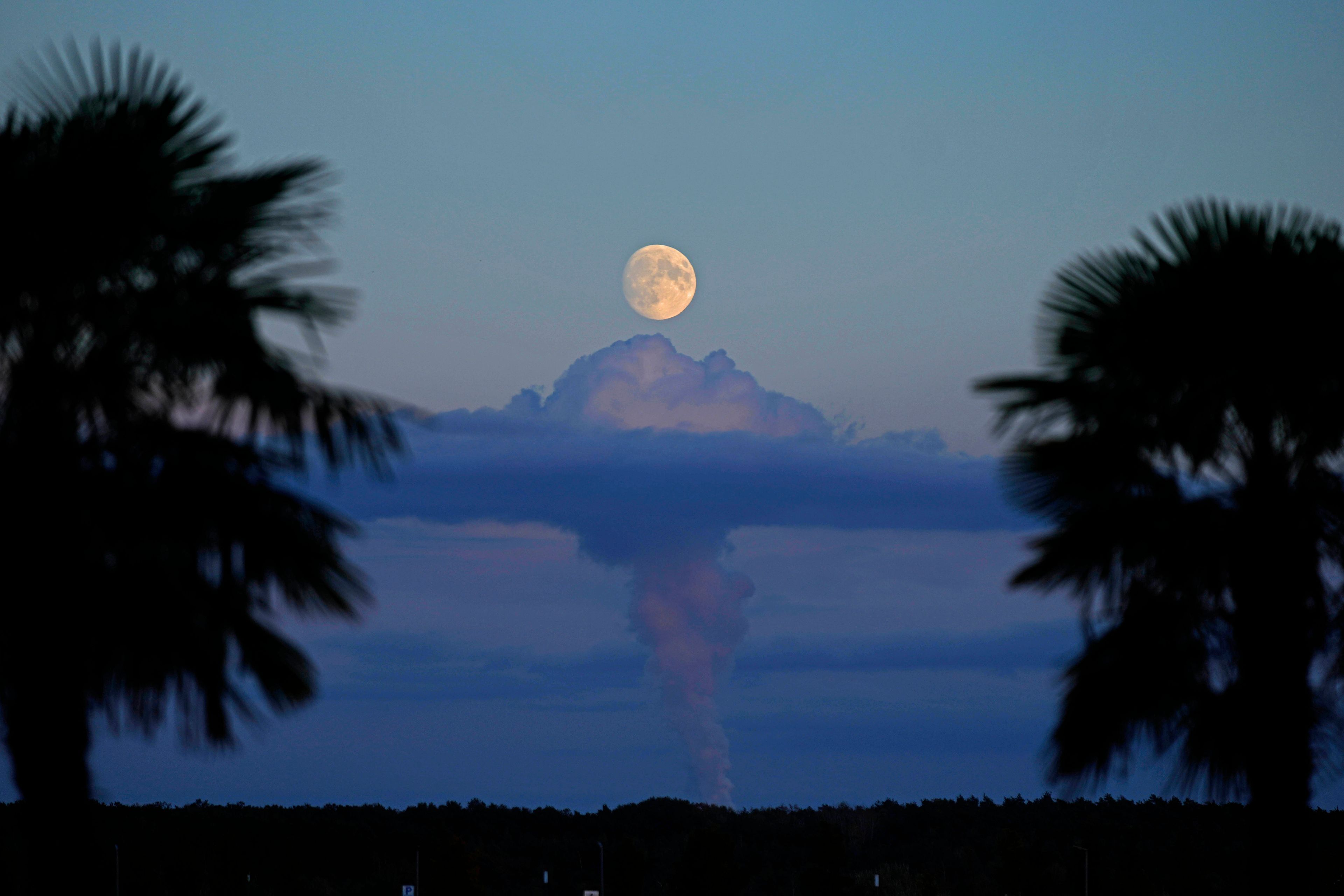October's supermoon pairs with a comet for a special nighttime spectacle
October's supermoon, the closest of 2024, teams up with comet Tsuchinshan-Atlas for a rare celestial show. Catch this bright duo in the night sky, with the final supermoon of the year in November.
CAPE CANAVERAL, Fla. (AP) — October's supermoon is the closest of the year and it's teaming up with a comet for a rare stargazing two-for-one.
The third of four supermoons this year, it will be 222,055 miles (357,364 kilometers) away Wednesday night, making it seem even bigger and brighter than in August and September. It will reach its full lunar phase Thursday.
In a twist of cosmic fate, a comet is in the neighborhood. Discovered last year, comet Tsuchinshan-Atlas is now prominent in the Northern Hemisphere after wowing stargazers in the Southern Hemisphere.
The moonlight will wash out some of the comet’s tail, but it’s still worth a look after sunset, said NASA's Bill Cooke.
“Most astronomers hate the full moon because its bright light messes up observing other objects. So it’s a bit hard for us to wax poetic about it even if it’s the biggest supermoon of 2024,” he said in an email.
Better catch the comet; it may never return. But don't fret if you miss Thursday's supermoon. The fourth and final supermoon of the year will rise on Nov. 15.
What makes a moon so super?
More a popular term than a scientific one, a supermoon occurs when a full lunar phase syncs up with an especially close swing around Earth. This usually happens only three or four times a year and consecutively, given the moon’s constantly shifting, oval-shaped orbit.
A supermoon obviously isn’t bigger, but it can appear that way, although scientists say the difference can be barely perceptible.
How do supermoons compare?
There’s a quartet of supermoons this year.
The one in August was 224,917 miles (361,970 kilometers) away. September's was nearly 3,000 miles (4,484 kilometers) closer the night of Sept. 17 into the following morning. A partial lunar eclipse also unfolded that night, visible in much of the Americas, Africa and Europe as Earth’s shadow fell on the moon, resembling a small bite.
October's supermoon is the year’s closest at 222,055 miles (357,364 kilometers) from Earth, followed by the November supermoon at a distance of 224,853 miles (361,867 kilometers).
What’s in it for me?
Scientists point out that only the keenest observers can discern the subtle differences. It’s easier to detect the change in brightness — a supermoon can be 30% brighter than average.
With the U.S. and other countries ramping up lunar exploration with landers and eventually astronauts, the moon beckons brighter than ever.
___
The Associated Press Health and Science Department receives support from the Howard Hughes Medical Institute’s Science and Educational Media Group. The AP is solely responsible for all content.
Connect with the Southeast Missourian Newsroom:
For corrections to this story or other insights for the editor, click here. To submit a letter to the editor, click here. To learn about the Southeast Missourian’s AI Policy, click here.











